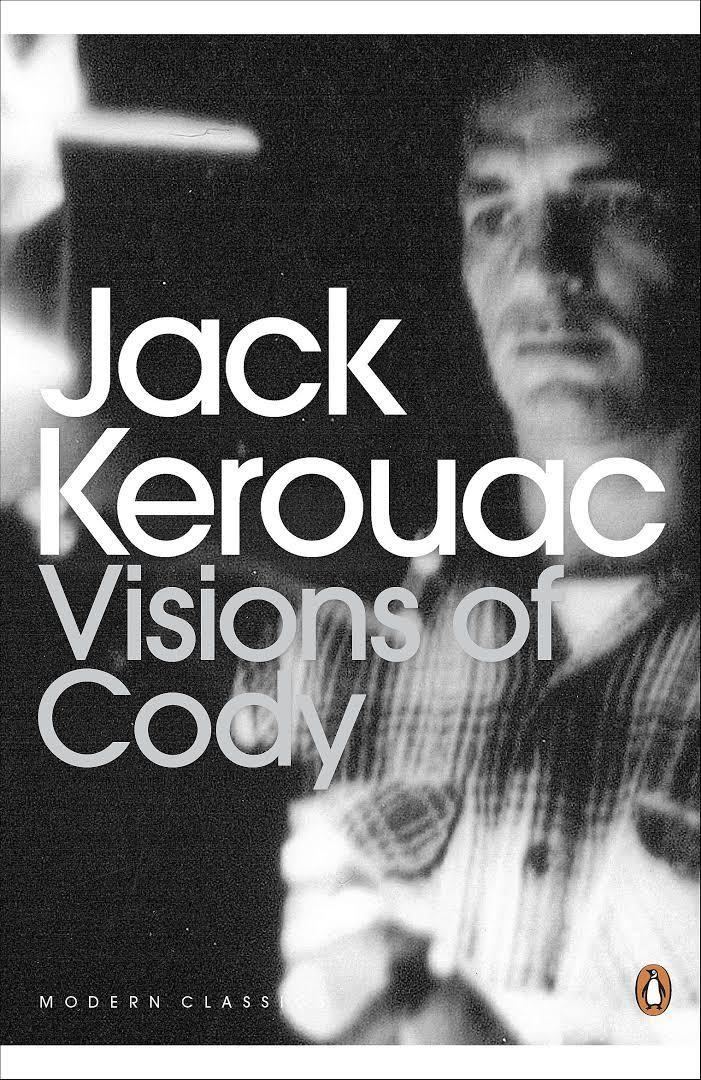7.2 /10 1 Votes7.2
Language English Pages 448 pp OCLC 27642070 Publisher McGraw-Hill Education | 3.6/5 Goodreads Publication date 1972 ISBN 0-14-017907-0 Originally published 1972 Country United States of America Genres Novel, Fiction | |||||||||||||||||||||||||||||||||
 | ||||||||||||||||||||||||||||||||||
Similar Doctor Sax, Desolation Angels, The Town and the City, Big Sur, The Subterraneans | ||||||||||||||||||||||||||||||||||
Jack kerouac readings from on the road and visions of cody
Visions of Cody is an experimental novel by Jack Kerouac. It was written in 1951-1952, and though not published in its entirety until 1972, it had by then achieved an underground reputation. Since its first printing, Visions of Cody has been published with an introduction by Beat poet Allen Ginsberg titled "The Visions of the Great Rememberer."
Contents
- Jack kerouac readings from on the road and visions of cody
- Origins
- Book structure
- Character key
- Themes and literary style
- References
Jack kerouac readings from on the road and visions of cody
Origins
Visions of Cody is derived from experimental spontaneous prose inserts that Kerouac added to the original manuscript of On the Road in 1951-52. Part of the novel is a fast-forward recapitulation of the events described in On the Road, which was also about Kerouac and Cassady. When Kerouac appeared on The Steve Allen Show in 1959, he secretly read from the introduction to the then-unpublished Visions of Cody although he was supposedly reading from On The Road, the book he was holding.
Book structure
The first section of the book is essentially a collection of short stream-of-consciousness essays, which Kerouac called "sketches", many simply describing elements of Duluoz's (Kerouac's) post-World War II New York City environment, from the texture and smells of a lunch counter to St. Patrick's Cathedral, or minor events like the decision to masturbate in a public restroom—all interlaced with Kerouac's internal dialogue. Along the way through these descriptions, Duluoz meanders towards a decision to go visit Cody in San Francisco.
The second section consists mainly of the transcription of taped conversations between Kerouac and Cassady (and occasionally "Evelyn"—Cassady's last wife, Carolyn and various friends) that extended over five nights as they drank and smoked marijuana. This is followed by a brief section entitled "Imitation of the Tape," a writing experiment by Kerouac in which he attempted to work from the spontaneity and speech patterns of the tape. The remainder of the book contains Kerouac's recounting of his travels with Cassady and the effect they had on their spiraling relationship.
Character key
Kerouac often based his fictional characters on friends and family.
"Because of the objections of my early publishers I was not allowed to use the same personae names in each work."
Themes and literary style
Like nearly all of Kerouac's works, Visions of Cody involves a "mythologizing" of his life, here as "Jack Duluoz", renaming characters and imposing grander themes on actual events while rapturously describing the mundane around him. It is also heavily focused on his perception of and relationship to Neal Cassady, renamed "Cody Pomeray." According to Kerouac, the book represented a vertical metaphysical study of Cassady as a character and its relationship to the general America. Continuing to experiment with the spontaneous prose method he had outlined in 1950, he aimed to find "the wild form that can grow with my wild heart". The tape recorder transcriptions injects the presence of speech into the text. The style has been described as New Journalism fifteen years early. There are several meta passages in the book in which Kerouac in the words of Allen Ginsberg "writes about writing", at one point in French. Donald Allen states that the book seems self-consciously unfinished in order to convey 'an undisturbed flow from the mind of personal secret idea words'.
